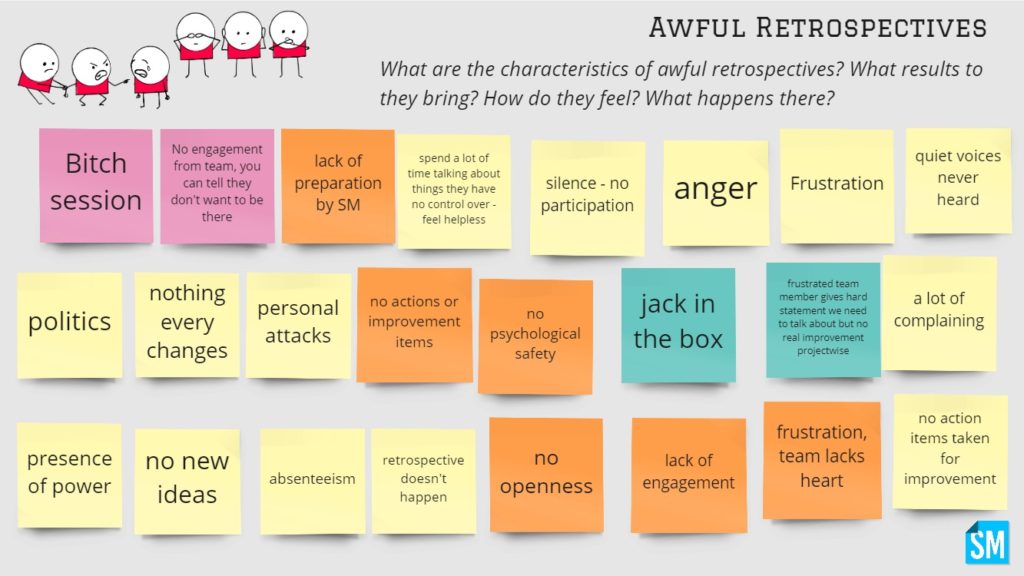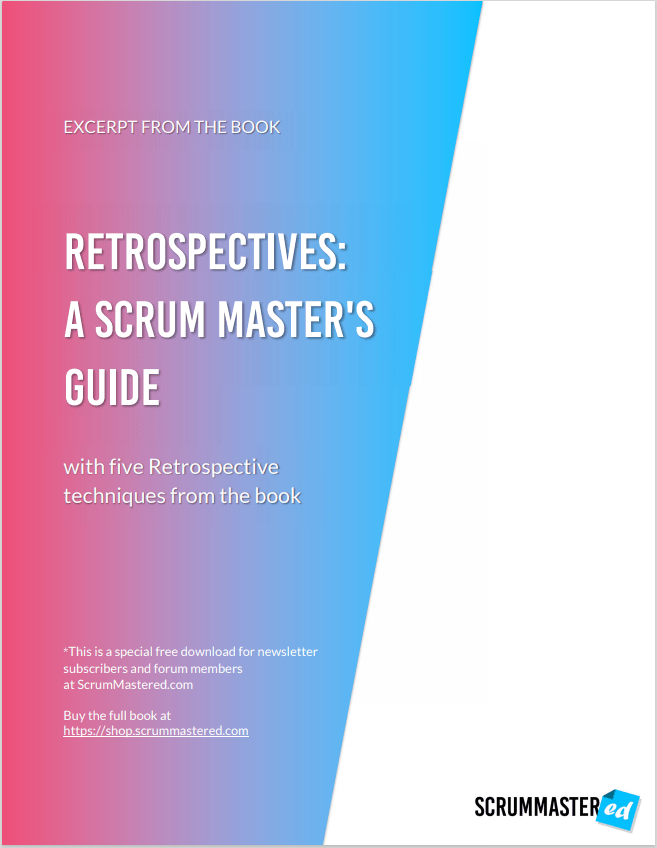It seems like the importance of having retrospectives in Agile teams has been covered, and more and more teams understand the reasons behind it and believe in them. But the more retrospectives you’ve completed, the more difficult it becomes to keep teams engaged.
How do you make your retrospectives not only more interesting, but also more productive?
Consequences of terrible retrospectives
We’ve all been there, we’ve all participated in at least one less-than-ideal retrospective. For years I’ve been asking people to share their experiences with courage and transparency. Here is a small snippet of what I’ve seen:

Everything you see in the image above, such as silence, anger, lack of engagement, no new ideas, lack of action – it all is a consequence of a stale retrospective.
That is why it is important to use various retrospective techniques and formats. If you are still not sure, why it’s NOT ok to use the same technique every time, keep reading.
Benefits of new Retrospective formats
Here is why I think it is extremely important to spice up your Scrum Master toolbox with new Retrospective techniques:
- Increased engagement. You simply can’t keep doing the same thing over and over again expecting people to stay interested. That is why providing your teams with a choice of techniques will help them get engaged in each retrospective you hold. It will almost turn it into a game.
- Variety of results. Different techniques provide you with an opportunity to look at the same problems from different angles which it turn might bring you new ideas of how to solve those problems. What I also found interesting, that new techniques help you uncover some of the hidden issues that no one on the team ever mentioned before.
- Personalized analysis. With a variety of techniques to use, you can easily direct your team at looking at the issues that are more relevant to them. If there’s a specific problem you would like to solve, you can choose the best technique to talk about it.
- Better statistics. Once you set up a set of techniques, you can finally start collecting some feedback about them. Simple questions about how the team liked a certain technique will go a long way in perfecting your Scrum Master Toolbox.
- Fun. As simple as that. Especially if you have multiple teams to work with, doing the same thing every Retrospective will quickly become tedious. This will not only be more fun for your teams, but for you as well.
Preparation is worth it
I’ve been using a variety of techniques to run inspect-and-adapt discussions with my teams throught the years. The results have always been amazing, and not only during the retrospective itself.
Even skeptical teams started to get excited about new formats and techniques we were going to use. It was fun and engaging, while still very solution-oriented.
Of course, this required a lot of preparation work in advance from my side. That is a part of the Scrum Master role after all, so I was taking extra steps to help my teams succeed.
If you are not sure where to start, I’ve got you covered!
Check out my free guide to engaging Retrospectives that will give you great tips on how to run your first Retro or just a new technique you haven’t tried before.


Learn more about the Retrospective Poker cards for Scrum Masters. They give you everything you need to run 20 successful retrospective formats, with preparation tips, instructions, and guidelines.
Even if changing techniques is intimidating at first as you need to be more prepared for each discussion (and we all know that the time is of essence for us), try it once, and you’ll get into it.
What was most successful retrospective format you’ve used and why?



